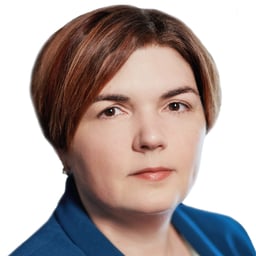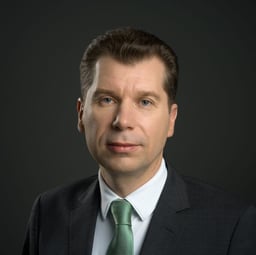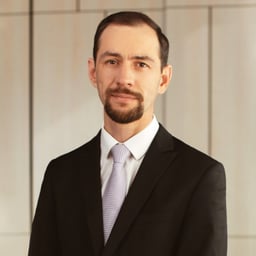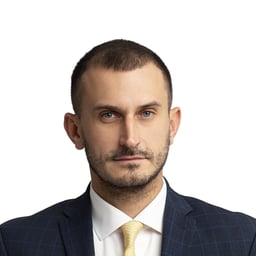Current approaches of court practice regarding the recognition of a non-resident’s representative office in Ukraine as a permanent establishment
The status of a representative office of a foreign company directly affects the taxation of the activities carried out by such a representative office in Ukraine.
According to the provisions of the Tax Code of Ukraine, a permanent establishment is a fixed place of business through which the business activity of a non-resident is wholly or partially carried out in Ukraine. Such a place of business may, in particular, consist of a branch, office, factory, workshop, warehouse or premises used for the delivery of goods, server, etc.
At the same time, in practice, disputes often arise regarding the qualification of a representative office: whether it performs only non-commercial functions, or actually carries out business activity in Ukraine and, accordingly, should be recognized as a permanent establishment.
In this article, we will consider the current approaches of court practice to certain issues regarding the recognition / non-recognition of a non-resident’s representative office as having the status of a permanent establishment.
Preparatory and auxiliary activities of a representative office
Both domestic and international legislation provides that one of the cases when the business activity of a non-resident carried out through its representative office in Ukraine does not fall under the definition of a “permanent establishment” is when such representative office carries out activities of a preparatory or auxiliary nature.
In particular, in the resolution dated February 15, 2024, in case No. 640/35881/21, the Supreme Court noted that when distinguishing core activities from preparatory and/or auxiliary ones, it is necessary to take into account that:
preparatory or auxiliary activities must be carried out for the benefit of the non-resident, and not for third parties;
core activities are usually perceived as activities that are substantial and significant based on the commercial goals and objectives of the organization;
preparatory activity precedes the commencement of the non-resident’s core activity in the territory of Ukraine;
auxiliary activity supports the process of conducting the core business activity by the non-resident and is carried out simultaneously with the core activity, but does not qualify as one. At the same time, auxiliary activity may be conducted either on a temporary or on a permanent basis.
Thus, in this case, the Supreme Court concluded that, by their nature, the actions of the representative office related to the registration of medicinal products in Ukraine, as well as their subsequent promotion for sale, are of a preparatory and auxiliary nature, since such activities are intended to ensure the possibility of marketing the respective medicinal product in the territory of Ukraine. However, these operations do not necessarily lead to the generation of income in the territory of Ukraine.
In the resolution of the Sixth Administrative Court of Appeal dated December 04, 2024, in case No. 640/13698/22, the issue of preparatory and auxiliary activities of a representative office was also examined, in particular taking into account the criterion of receiving / not receiving income from a certain activity of the representative office. The court noted that the activity of a representative office, which does not generate any income for the parent company, cannot, under any circumstances, constitute a significant part of the overall business activity of the enterprise, and therefore has an exclusively auxiliary nature.
Duration of a representative office’s activity and expenses for its maintenance
Tax authorities often refer to the long duration of a representative office’s activity on the territory of Ukraine, as well as to the significant amount of expenses incurred by the parent company for its maintenance, as circumstances which, in their opinion, indicate that such a representative office meets the criteria of a permanent establishment.
At the same time, in the resolution of the Supreme Court dated February 15, 2024, in case No. 640/35881/21, it was concluded that international legislation does not establish specific timeframes after which a representative office acquires the status of a permanent establishment. As a general rule, in order to qualify as a permanent establishment, the activity must be regular, stable, and stationary – that is, carried out at a specific location and with a certain degree of permanence.
However, in the opinion of the Supreme Court, the amount of expenses incurred by a non-resident to maintain a representative office may, under certain conditions, be considered a factor supporting the conclusion that such a representative office should be granted the status of a permanent establishment. At the same time, in order to determine whether such expenses are indeed significant, it is necessary to compare the amount of funding allocated to the representative office with the overall amount of funds received by the non-resident from its business activity, also taking into account the specifics of the business sector, market conditions, and other relevant factors in their entirety.
A similar approach was also outlined in the resolution of the Sixth Administrative Court of Appeal dated May 05, 2025, in case No. 320/44103/23, which stated that the duration of the representative office’s presence at a specific location, the number of personnel, and the amount of fixed assets available cannot serve as grounds for granting such representative office the status of a permanent establishment, if its activities are limited to purely preparatory and/or auxiliary functions.
Identity of activities and the conclusion of contracts on behalf of the parent company
Disputes regarding the recognition of a permanent establishment of a foreign company in Ukraine often arise based on the existence of powers of attorney issued to certain individuals by such company, authorizing them to perform a wide range of functions. Tax authorities, as a rule, take into account not the actual actions performed under the power of attorney, but the content of such power of attorney itself.
Thus, in the resolution dated July 04, 2024, in case No. 160/11095/23, the Supreme Court identified the following features of a permanent establishment, which may be applied either simultaneously or separately:
the representative office carries out activities that are wholly or partially identical to the core activity of the non-resident;
a person (other than an agent with an independent status) acts on behalf of the company and uses authority in the contracting state to conclude contracts on its behalf.
In order to avoid recognition of identity between the activities of the parent company and those of the representative office, the latter’s activities must differ from the statutory functions of the parent company.
Regarding the second feature, it is worth noting that the prevailing position remains that issuing a power of attorney with broad powers (including authority to conclude any contracts related to the non-resident’s activity) is not sufficient grounds for concluding that the representative is performing the functions of a permanent establishment. Conclusions regarding the performance of permanent establishment functions must be based directly on the analysis of the actual actions performed by such representative, rather than on the content of the power of attorney (resolution of the Supreme Court dated December 21, 2022, in case No. 200/7051/20-а, resolution of the Second Administrative Court of Appeal dated October 10, 2024, in case No. 440/18088/23, resolution of the Third Administrative Court of Appeal dated January 09, 2024, in case No. 160/9196/23).
Engaging in investment activity
Court practice sometimes reflects the view that the purchase and sale of corporate rights and other investment activities carried out by a non-resident’s representative office are not considered grounds for recognizing the representative office as a permanent establishment, even if such activities correspond to the activities of the parent company.
However, in a recent resolution of the Supreme Court dated March 20, 2025, in case No. 280/4264/21, it was concluded that, according to the provisions of international and domestic legislation, investment activity is one of the types of business activity. In particular, for professional investors, such activity may constitute core business activity and a source of independent income.
Therefore, in the opinion of the Supreme Court, it is important to distinguish whether the representative office is conducting investment activity as an independent (core) type of business activity, or whether it has an auxiliary nature related to supporting or developing the core activity.
Thus, considering that in this case the representatives of the foreign company were carrying out investment activity (primarily concluding contracts for the purchase and sale of shares in Ukrainian companies) on behalf of the foreign company, and such activity was also identical to the core activity of that company, the representative office was recognized as a permanent establishment.
Conclusion
In conclusion, it should be noted that the determination of the status of a non-resident’s representative office in Ukraine is of significant importance for tax consequences and, in practice, often presents challenges. In general, as the analysis of court practice shows, courts go beyond a formal analysis and focus on the actual substance of the representative office’s activity.
Therefore, foreign businesses should take the above-mentioned approaches into account when planning their activities in Ukraine in order to minimize the risks of tax disputes, additional tax assessments, and other negative consequences.
Authors:
Viktoriia Bublichenko, Partner, Head of Tax, Restructuring, Claims and Recoveries practice at GOLAW, Attorney at law
Tetiana Fedorenko, Senior Associate at Tax, Restructuring, Claims and Recoveries practice at GOLAW, Attorney at law
Anna Kostsova, Paralegal at Tax, Restructuring, Claims and Recoveries practice at GOLAW
GOLAW - August 7 2025










